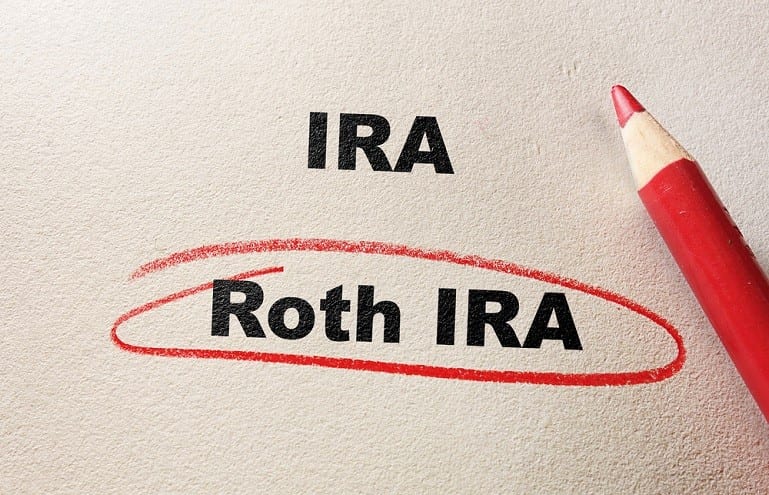Last Chance for Roth IRA Conversions

It is decision time for Roth IRA conversions. By letting the decision slip past Dec. 31 you miss a very profitable gift from Congress.
As you probably know, Congress created the Roth IRA, which accumulates income and gains tax free, and from which all withdrawals are tax free. Another benefit of the Roth IRA is that the minimum distribution requirements for those over age 70½ don’t apply. I’ve covered the details in past issues and in my Retirement Tax Guide (see this month’s advertising insert on the Platinum Club).
You can convert a regular IRAs into a Roth IRA. To convert, you have to pay income taxes equal to what would owed if you withdrew the entire IRA today. But if you convert by Dec. 31, you can spread the tax bill over four years. If you convert next year, you must pay the entire tax bill in the year of the conversion.
To convert, your adjusted gross income for the year must be $100,000 or less. The limit is the same whether you are single or a married couple filing jointly.
Here are some last-minute points on conversions that supplement details in previous issues.
- Use money outside the IRA to pay the taxes. You want as much money as possible inside the IRA to benefit from the tax-free compounding. A conversion makes less sense if you take money out of the IRA to pay the taxes – though it still can make sense if you let the money compound in the Roth IRA for 10 years or more after the conversion.
- The longer you leave the money in the Roth IRA before beginning withdrawals, the more sense a conversion makes. Be prepared to leave the Roth IRA alone for at least seven to 10 years after the conversion. It also to withdraw money in installments from the Roth IRA, instead of taking a lump sum.
- Your tax bracket now and at withdrawal time makes a big difference. The more you expect your tax bracket to drop, the less sense it makes to pay income taxes at today’s rate. But you cannot always believe the conventional wisdom that your tax rate will drop in retirement. Your income might drop, but you might also lose mortgage interest expense and a few other deductions.
- Don’t assume conversion is an all or nothing question. You can convert any percentage of the IRA to a Roth (depending on your IRA sponsor’s minimum account requirements). Suppose you cannot wait seven years or more to begin taking distributions. Then you might want to leave enough in your regular IRA to cover expected expenses for seven years or more, and convert the rest into a Roth IRA. Or if you don’t have enough cash to pay taxes for converting the entire IRA, convert whatever amount you can afford. Late, two you might be able to convert the rest (though you’ll have to pay all the taxes in the year of the conversion).
- You can convert and change your mind by Dec. 31. This might be beneficial to anyone who converted before the market decline. Suppose you converted into a Roth IRA, paid taxes at the IRA’s peak value, and now see that the account’s value is reduced. You can reverse the conversion, then convert back at today’s value. That way, you’ll be paying taxes on today’s value instead of the inflated value of a few months ago. The conversion reversal was intended to be used by taxpayers who mistakenly thought they would have less than $100,000 in adjusted gross income for the year. But anyone can use it, for any reason.The IRS recently limited you to one reconversion per year. Apparently, there were people who were unconverting then reconverting every time the market moved so that they could lock in the lowest tax cost to date. The effective date of the rule is Nov. 1. So if you did multiple conversions before that you won’t have a problem. If you make more than one reconversion, the IRS simply ignores all the subsequent ones. You pay taxes based on the first reconversion.
- Converting to a Roth IRA also can reduce taxes on Social Security benefits. Distributions from a regular IRA are taxable, and that boosts the amount of Social Security benefits that are taxable. Distributions from a Roth IRA are not taxable (after waiting five years), so they won’t make Social Security benefits taxable. It is a factor to consider if IRA distributions are increasing taxes on your benefits or are likely to in the future.
A Roth IRA conversion can be a big help if your IRA funds will go primarily to your children or grandchildren. In a regular IRA, required minimum annual distributions begin after age 70½. That means you’ll be taking money out of your IRA and paying taxes when your real intention is to let the money compound for your heirs.
If you convert to a Roth IRA, the required minimum distributions are eliminated during your lifetime. When your heirs inherit, they will be required to begin minimum annual distributions over their life expectancies. And the distributions will be tax free to them.
Deciding whether or not to convert depends on some number-crunching. The best way to do this is on the internet through various calculators on web sites. Some of the best can be found at www.rothira.com, www.forbes.com/rothcalc; www.vanguard.com; and www.troweprice.com. If you don’t have access to the internet but do have a computer, consider ordering conversion software from T. Rowe Price. Many mutual fund companies also offer workbooks that will help you decide whether or not to convert. Or you can meet with a financial planner or accountant who has some software.
![]()





